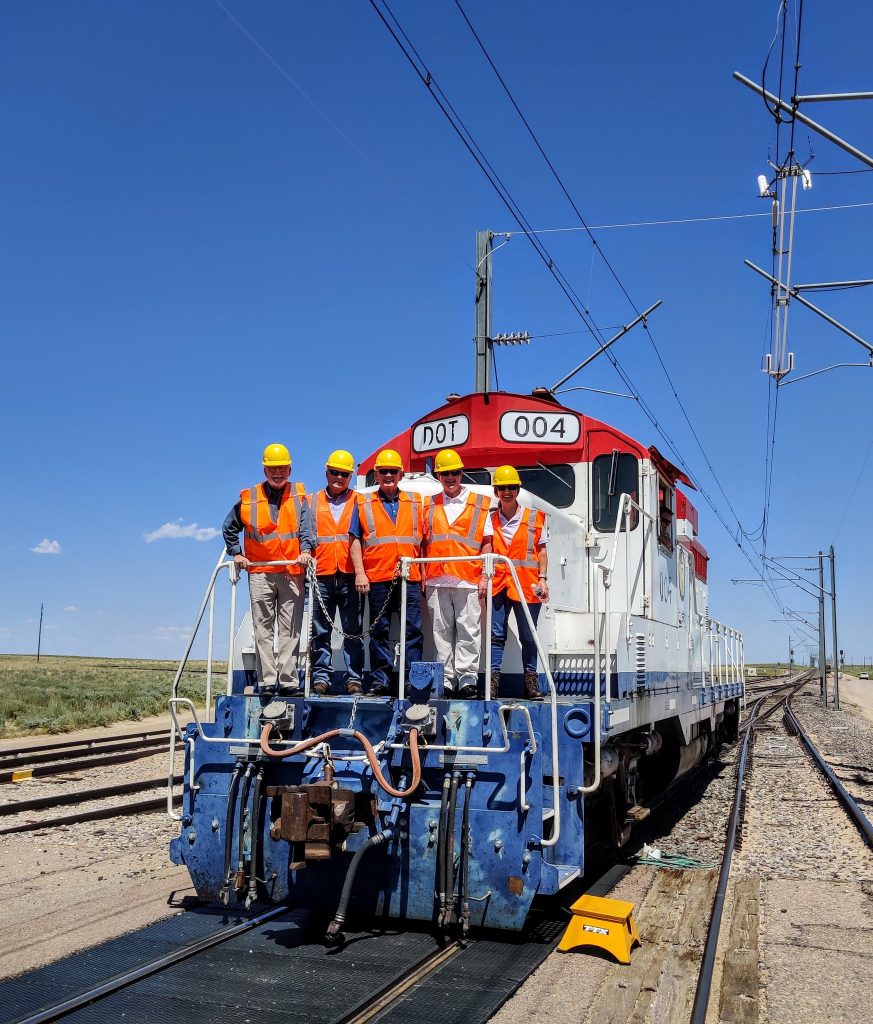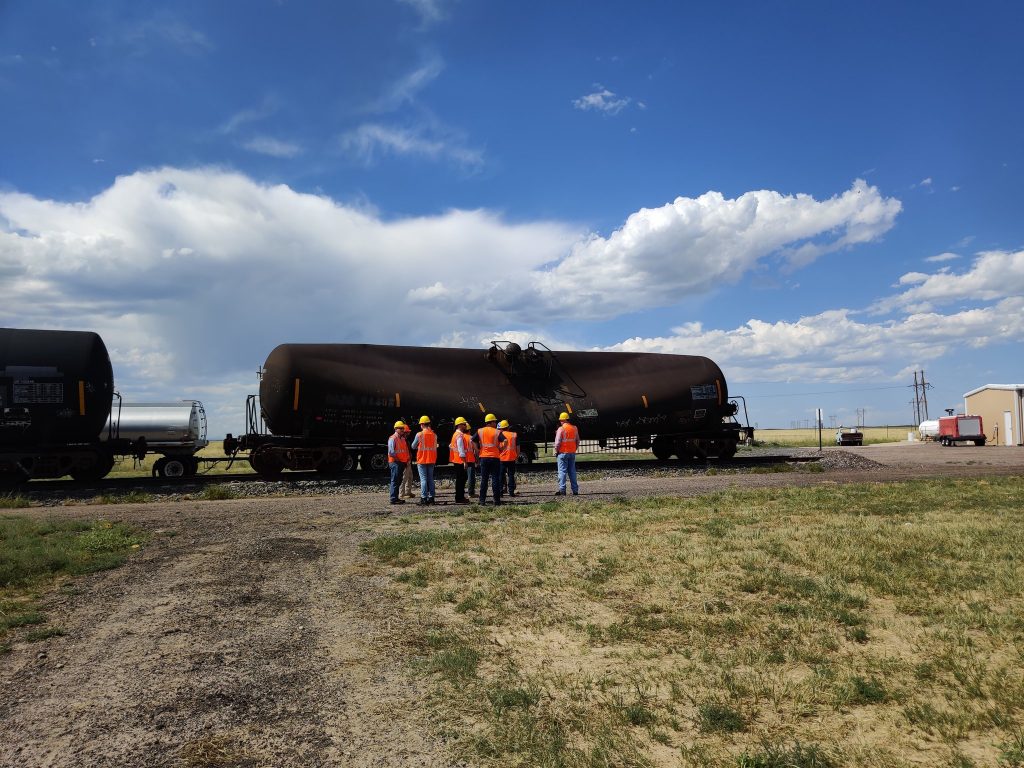Pueblo, CO — A 52-square-mile facility with extensive test tracks and specialized laboratories was the backdrop for a mid-August visit from a National Association of Counties (NACo) delegation. Members of NACo’s Transportation Steering Committee, joining GoRail last week, made their way to Pueblo, CO to see first-hand how the rail industry is on the cutting edge of technology and innovation.
 The Transportation Technology Center Inc. (TTCI), a subsidiary of the Association of American Railroads, is the world’s leading rail research and testing facility. Many of rail’s new technologies — like the world’s first laser-based rail inspection system and on-board computer systems that analyze track geometry — are developed and tested at TTCI. NACo members learned how the facility’s research helps keep the United States a global leader on freight rail transportation and makes a safe rail network even safer.
The Transportation Technology Center Inc. (TTCI), a subsidiary of the Association of American Railroads, is the world’s leading rail research and testing facility. Many of rail’s new technologies — like the world’s first laser-based rail inspection system and on-board computer systems that analyze track geometry — are developed and tested at TTCI. NACo members learned how the facility’s research helps keep the United States a global leader on freight rail transportation and makes a safe rail network even safer.
TTCI houses isolated testing for all categories of freight and passenger rolling stock, vehicle and track components, and safety devices. Its 48 miles of railroad test track are used to develop and research an array of equipment from locomotives to track components to signaling devices. Specialized tracks are also used to evaluate vehicle stability, safety, endurance, reliability, and ride comfort. TTCI’s massive complex eliminates the interferences, delays and safety issues that would arise if testing were done on an open operating rail system.
Commissioners got a hands-on look, for example, at how positive train control (PTC) is activated in the cab of a locomotive. They also witnessed demonstrations of drone operations, bridge testing, track and wheel health and wayside detectors—in addition to interacting directly with the engineers and rail experts who design, develop and test these technologies.
TTCI is also a great example of how railroads partner with the government to tackle safety. The Federal Railroad Administration (FRA) contributes about a third of its annual research budget toward projects conducted at TTCI.
Another central part of NACo’s TTCI experience was training at the Security and Emergency Response Training Center (SERTC), a first responder training facility also housed at TTCI. Originally founded to train railroad officials on handling hazardous materials when it was launched in 1985, SERTC has expanded to include outside groups from the public sector emergency response community, the chemical industry, government agencies, and emergency response contractors from all over the world. All told, SERTC has prepared more than 70,000 safety professionals and other stakeholders worldwide with training for rail incidents. It also offers free, web-based courses for qualified first responders.

After a full day of railroading—including “driving” locomotives and hazmat demonstrations—the NACo delegation gained a new understanding of how railroads are innovating for safety and network efficiency.
“People don’t realize that America’s freight railroads operate the safest, most efficient and most cost-effective freight transportation system in the world,” said Carver County Commissioner Randy Maluchnik, chair of NACo’s Transportation Steering Committee. “Being at TTCI and seeing how all of this technology is developed and tested, it’s truly impressive.”



